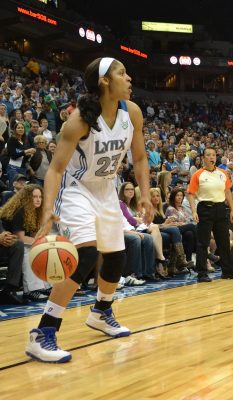
For most of the past century, four sports have reigned supreme for American viewers: baseball, football, basketball and hockey. Whether at the professional or collegiate level, those sports, primarily the men’s rendition of them, have dominated the sports scene.
That “four major sport dominance” narrative has been changing for some time, and more than halfway through the current decade, it is starting to be recognized.
Major League Soccer, arguably the fifth top sports league in North America, began play in 1996. The National Lacrosse League has undergone expansion in recent years, and Major League Lacrosse was began in 2001. Since then, the Arena Football League, Women’s National Basketball Association, various professional women’s hockey leagues and the National Women’s Soccer League have found relevance in spectators’ eyes.
While ratings have dropped in leagues like the NFL and NHL, smaller sports have begun to take some of the market of sports viewers. NBC Sports Network’s package of English Premier League soccer has been a wild success, so much that ESPN bought in to broadcast MLS games.
The Olympics in Rio last month also showcased a plethora of nontraditional sports in America such as field hockey, handball, fencing, rugby and gymnastics that brought in excellent ratings and newfound viewer interest.
With the ratings falling in the NFL, and the general apathetic reaction specifically from millennials about what used to reign as the supreme sport, there is room for other sports to flourish. It has been well-documented that MLB ratings have declined, including for events such as the World Series and All-Star Game, especially among the younger generation.
Despite NFL ratings lagging, they still far exceed smaller and less exposed sports. A huge step for a nontraditional league was Major League Soccer’s championship earning a primetime slot on Fox.
Meanwhile, Fox also elected to broadcast a regular season MLS contest in an NFL timeslot a week ago after its NFL pregame show, giving pro soccer its largest potential platform. That slot earned MLS its largest viewing audience in 12 years, and the league has broke the one million viewers threshold twice this season.
Lacrosse viewership has also been increasing in recent years. The NCAA Division I Men’s Lacrosse Championship on ESPN in May drew its highest ratings since 2007 and a 43 percent increase from the 2015 season finale. The championship game, which featured a University of North Carolina overtime upset over top-seeded University of Maryland, reached nearly 500,000 viewers.
In May of this year, the WNBA saw its highest overnight ratings on ESPN, and is by far the most exposed women’s professional sport. Women’s pro sports have a larger audience than ever, between the WNBA and the two pro women’s hockey leagues earning television exposure.
About five years ago, the playing field was just the major four sports along with major college football and basketball programs. That has changed dramatically with the emergence of television contracts and online media presence — something startup leagues previously did not have.
One way or another, the amount of nontraditional sports being consumed is increasing, and its correlation to the drop of attention on major sports cannot be ignored.
Marisa Ingemi covers field hockey for the Daily Free Press. She is also a sports radio host on WTBU and involved in BU Athletics social media department. An avid sports fan, Marisa is also the manager of the acclaimed lacrosse website InLacrosseWeTrust.com and the Boston Bruins beat writer for InsideHockey.com.

